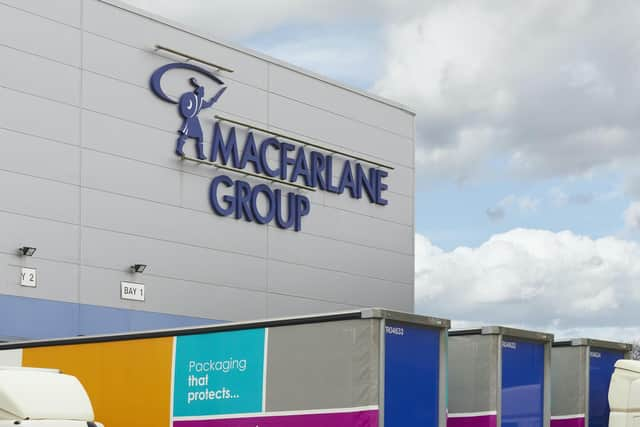Scots packaging group Macfarlane increases board diversity with appointment of former John Lewis director
Laura Whyte will take up the role as a non-executive director from the start of next month, the Glasgow-headquartered group confirmed.
She has also been appointed as chair of Macfarlane’s remuneration committee, succeeding Aleen Gulvanessian, who will become chairman of the group on October 1.
Advertisement
Hide AdAdvertisement
Hide AdWhyte had a long-standing career at John Lewis where she served on the management board for more than ten years, latterly as HR director. She led several business initiatives in support of retailing, with a particular focus on the customer experience, Macfarlane noted.
Since 2014, Whyte has worked as a non-executive director with several organisations. Her roles include Capital and Regional where she chairs the remuneration and ESG [environmental, social and governance] committees and is a member of the audit and nominations committees, The British Horseracing Authority and the Old Naval College Greenwich.
Chairman elect Gulvanessian said: “I am delighted to welcome Laura to the board of Macfarlane Group. I am confident that her strong people and customer focus from John Lewis as well as wider non-executive experience, will be of significant benefit to the business. Laura’s appointment continues to increase the diversity on our board.”
Last month, Macfarlane said it was bracing itself for a “challenging environment” but remained confident that it can mitigate the impact of spiralling inflation.
Posting first-half results revealing a rise in sales and profit, the group said it had achieved a “solid performance”, particularly when compared to a strong trading period a year earlier.


It said this had been achieved against the backdrop of a slowdown in spending from the e-commerce sector and “significant inflationary pressure” on operating costs.
As well as distributing a range of protective packaging products, the firm designs and manufactures packaging for high value and fragile items.
The business employs more than 1,000 people at 37 sites, principally in the UK, as well as in Ireland, Germany and the Netherlands. It supplies more than 20,000 customers, chiefly in the UK and Europe.
Advertisement
Hide AdAdvertisement
Hide AdResults for the six months to the end of June show the group generated revenues from continuing operations of just over £139.2 million, up 14 per cent on a year earlier. Operating profit was up 4 per cent to £9.6m while profit before tax rose 3 per cent to almost £8.9m.
An interim dividend of 0.9p per share was declared, marking a year-on-year increase of 3 per cent.
Departing chairman Stuart Paterson, who has served nine years on the board, said: “The group has achieved a solid performance in the first half of 2022. This has been achieved against the backdrop of a slowdown in spend from the e-commerce sector and significant inflationary pressure on operating costs.
“We have also made strategic IT investments and incurred start-up costs on our new north-west of England distribution centre.
“We expect to experience a continuing challenging environment with inflationary pressure on our operating costs and slower demand from our e-commerce customers.”
Comments
Want to join the conversation? Please or to comment on this article.